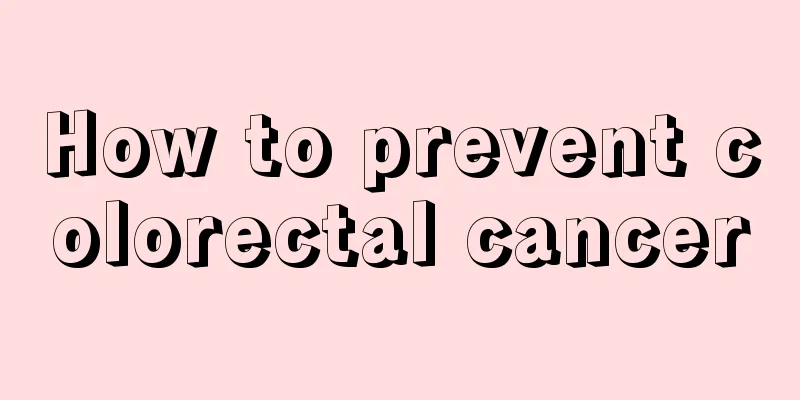How to treat appendicitis? It turns out there are several methods

|
Appendicitis is a common disease in daily life, also known as acute appendicitis. If it is not treated in time, it will cause great harm to your health. So how should you treat appendicitis? Let’s take a look at some treatments for appendicitis! 1. Non-surgical treatment When acute appendicitis is in the early simple inflammatory stage, once the inflammation is absorbed and subsides, the appendix can return to normal and will not recur. Therefore, the appendix does not need to be removed. Non-surgical treatment can be used to promote the early disappearance of appendicitis inflammation. When the diagnosis of acute appendicitis is clear and there are surgical indications, but the patient's physical condition or objective conditions do not allow it, non-surgical treatment can be adopted first to delay surgery. If acute appendicitis is combined with localized peritonitis and an inflammatory mass is formed, non-surgical treatment should also be used to allow the inflammatory mass to be absorbed before considering elective appendectomy. If the inflammatory mass turns into an abscess, it should be incised and drained first, followed by elective appendectomy. When the diagnosis of acute appendicitis has not been confirmed and needs to be observed, non-surgical treatment can be used while observing the changes in the condition. In addition, non-surgical treatment can also be used as preparation for appendectomy surgery. In short, non-surgical treatment has its important role. Nonsurgical treatments include: (1) General treatment: mainly bed rest, fasting, intravenous infusion of water, electrolytes and calories, etc. (2) Application of antibiotics: The application of antibiotics is very important in non-surgical treatment. The selection and dosage should be determined according to the specific circumstances. Most cases of appendicitis are mixed infections. In the past, penicillin and streptomycin were used together with satisfactory results. Later, it was found that the number of drug-resistant strains increased and the infection rate of anaerobic bacteria increased. Then the "Golden Triple" was used, namely ampicillin (ampicillin), gentamicin and metronidazole. It has a wide antibacterial coverage, is not expensive, and is highly praised. In recent years, new and highly effective antibiotics have emerged, and cephalosporins are constantly being updated. Therefore, cephalosporins or other new β-lactam antibiotics are often used in combination with metronidazole. (3) Use of analgesics: Pain relief is sometimes very necessary. Severe pain can increase mental terror, reduce the body's immune function, and thus weaken the patient's ability to fight disease. General painkillers sometimes cannot stop severe pain. The use of morphine-like drugs can be considered but must be used with caution. It can be used for patients who have decided to undergo surgery, but is contraindicated in general situations, especially for the weak. (4) Symptomatic treatment: such as sedation, antiemetic, and placement of a gastric decompression tube when necessary. 2. Surgical treatment In principle, acute appendicitis, except for the mucosal edema type which can be cured by conservative treatment, should be treated with appendectomy to remove the lesion to achieve the following: ① Rapid recovery; ②Prevent the occurrence of complications; ③ Good treatment results can be achieved for appendicitis that has already developed complications; ④ Remove lesions that may recur in the future; ⑤ Obtain correct pathological results. However, acute appendicitis is extremely complicated due to the severity of the disease, the time of visit to the hospital, the patient's age and physical strength, etc. Moreover, many diseases are sometimes difficult to distinguish from appendicitis. Therefore, the treatment should vary according to the disease, and surgery for "appendicitis" should never be performed hastily because it is a minor disease. The various complications caused by improper surgical operation account for 5% to 30%, and the mortality rate is also around 1%. If the appendix surgery is performed incorrectly due to misdiagnosis and the primary disease is aggravated, the risk will be even greater. Therefore, although the appendix is small, it must be taken seriously and not be neglected in the slightest. Above we introduced what appendicitis is. We know that the occurrence of appendicitis has a serious impact on our body. We must find a good way to treat appendicitis. Appendicitis is prone to some complications, so we must treat appendicitis as quickly and as early as possible. The treatment of appendicitis is described in detail above. |
<<: What are the symptoms of appendicitis? There are actually ten of them
>>: The difference between the cecum and the appendix is like this
Recommend
What is constipation?
Because the pace of life is relatively fast now, ...
What causes asymmetrical lips?
If your lips feel asymmetrical and always tilted ...
Who can't accompany hyperbaric oxygen?
As a relatively new technology, hyperbaric oxygen...
What should we do to prevent cervical cancer? Early cervical cancer screening is the key
In recent years, the incidence of cervical cancer...
Can lichen striatus be cured?
Lichen striatus often occurs in some children, es...
What should you pay attention to if you have laryngeal cancer?
If laryngeal cancer is confirmed, it must be take...
What are the benefits of sunbathing
In summer, many girls are afraid of sun exposure ...
Can femoral neck fracture be completely cured?
Can femoral neck fracture be completely cured? El...
How effective is molecular targeted therapy for liver cancer
Several molecular targeted therapy drugs have bee...
What are the symptoms of hemophagocytic syndrome
Hemophagocytic syndrome is an uncommon disease, b...
How to relieve the panic after taking diet pills
Everyone loves beauty, and every girl wants to ha...
What type of ointment is best for removing chickenpox scars?
Chickenpox is caused by external environmental fa...
The stool is golden and a little watery
When a child is young, it is not easy to judge th...
What are the effects and functions of wolfberry rose tea?
Herbal tea is a kind of tea with unique taste. Th...
When should I drink muscle-building powder?
When it comes to muscle-building powder, people w...









